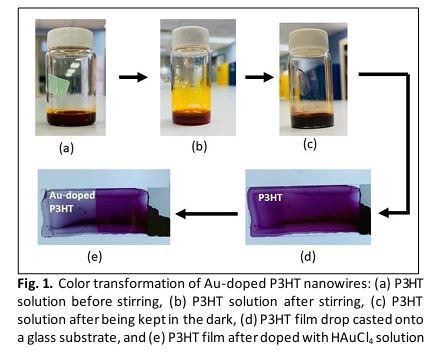Optical Properties of Gold Nanoparticles Doped P3HT Nanowires Films
DOI:
https://doi.org/10.37934/armne.23.1.2634Keywords:
P3HT, polymer nanowire, self-assembly, gold doping, UV-Vis, dip coatingAbstract
Poly (3-hexyl-thiophene-2,5-diyl) (P3HT) material is widely used as the benchmark of p-type semiconductors in organic photovoltaics due to its high conductivity and self-assembly into nanowires. In this study, gold-doped P3HT nanowires were synthesized using o-xylene, and their optical and electronic changes were investigated. P3HT nanowires were kept in the dark for 72 hours to obtain 60 – 80 nm diameter of nanowires. 1 mM of chloroauric acid doping was used as glass-coated P3HT nanowires were dipped repetitively into the chloroauric acid solution. It was found that visible absorbance intensity reduced and the calculated optical bandgap energy of P3HT nanowires thin film decreased as much as 0.08 eV after doping. FTIR and Raman show there are no extreme changes in P3HT conjugated backbones structure after doping meaning that the gold did not completely integrate within nanowires. From this observation, we discussed the feasibility of this coating method to produce metal-doped organic film and the required improvement to suit photonic device applications.









